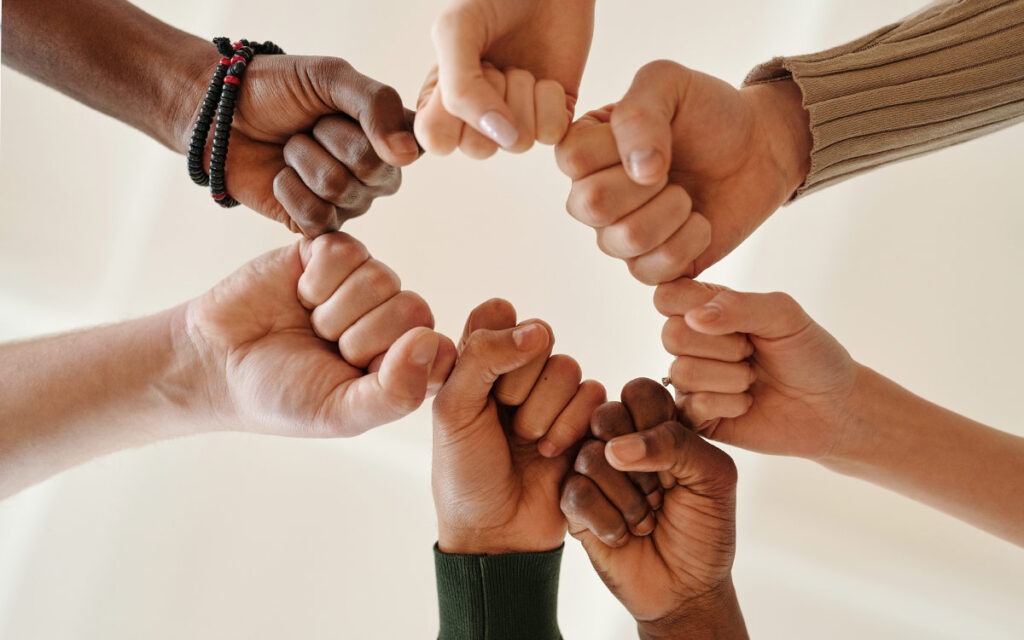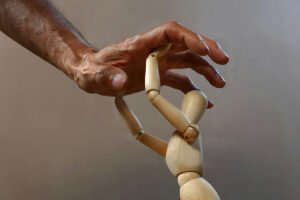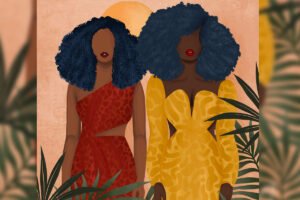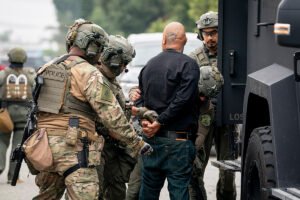
Philanthropy comes in many forms. For over a decade, Black Philanthropy Month has been a time of reflection on Black philanthropists’ contributions—including the contributions of Black liberation movements. As an American-born, Vietnamese philanthropic professional, this annual convening in August prompts me to reflect not only on the financial and political contributions that Black communities up and down the socioeconomic ladder have made to a democratic society. It also encourages me to rethink the definition of philanthropy itself.
Black liberation movements have advanced social progress for those who have not traditionally had political power or access to capital: the working class (white and BIPOC), women, queer and trans people, and immigrants and refugees. These movements’ leaders—usually grassroots volunteers who I view, too, as philanthropists—have demonstrated solidarity in their non-monetary philanthropy. Their approach to philanthropy did not just focus on redistributing wealth for charitable purposes based on a donor’s individual intent or a generalized love of humankind. They collectively pooled resources—such as skills, leadership, and knowledge—for the love of their communities and to advance social movements and uplift humankind.
Organizing for Black Liberation: Towards a Multiracial Democracy
We need only look at the past half century of Black-led movements to see how civil rights, labor, and community-based activists and organizers for Black liberation have contributed to multiracial democracy in the US. Black women who volunteered for the Black Panther Party—like Vanetta Molson-Turner, a registered nurse who contributed her time and expertise to the Black Panther Party’s Community Survival Programs—pooled their resources to serve their people in response to underinvestment and discrimination. Together, they fed Black school children free breakfasts, advocated for public safety reforms, developed universal healthcare programs, and fought sickle cell anemia, a genetic disease that is prevalent in Black communities but whose research was severely underfunded.
[Organizers for Black liberation] built cross-racial solidarity with other movement leaders who envisioned a more just and equitable world for Black America and all humanity.
Black organizers and leaders like Addie Wyatt, a feminist labor leader, and Bayard Rustin, queer civil rights organizer of the 1963 March on Washington, also contributed their time and expertise to develop civic organizations that empowered workers—white and BIPOC—to win better wages and workplace conditions and advance rights and access across race, class, gender, and sexuality.
The nontraditional philanthropy of these Black organizers did not only address systemic failures by supporting community programs to meet basic human needs. It also contributed to the long-term process of building community power and self-determination through organizations that seek to change our systems. In so doing, these leaders built cross-racial solidarity with other movement leaders who envisioned a more just and equitable world.
As a result of the movements of the 1960s, the US government and nonprofit agencies strengthened social safety nets. This was especially true at the county and municipal levels, where community organizing resulted in policy wins that benefited the most vulnerable, despite a conservative backlash that eventually defunded many federal programs. The Black liberation struggle’s fight for equality, justice, and human and civil rights stirred our nation’s conscience and built a stronger democracy that represents an expanded base, including my own community in the heart of Silicon Valley: San Jose’s Vietnamese-American community.
My Vietnamese-American Story
When I reflect on the legacy of Black liberation, I speak from my own Vietnamese-American story. In Việt Nam, my family lived for generations in the small city of Thốt Nốt in the Cần Thơ province, bordering the Mêkông Delta. There, they built wealth by purchasing land, establishing a small businesses, and engaging in philanthropic efforts, such as pooling financial resources to support local community development. Like the Panthers’ Community Survival Programs, my family and other Thốt Nốt’s residents maintained an informal community infrastructure based on the value of shared prosperity that supported all residents.
After the end of the Việt Nam War in 1975, the state seized nearly all my family’s assets—except for the gold nuggets buried in the backyard, which we exchanged for a ticket out of the country. My mother, father, grandmother, and two older brothers decided to migrate. My third eldest brother was born soon after in Malaysia’s Bidong Island refugee camp.
In the early 1980s, my family entered the US through the Port of Oakland and resettled in East Palo Alto, then the heart of Silicon Valley’s Black community. During resettlement, my family benefited from the public and nonprofit programs for which Black leaders of the 1960s tirelessly fought. Thanks to their legacy, my family was able to rebuild their wealth. They had the opportunity, once again, to purchase property, secure stable employment, and establish a small business.
What Black Liberationists Taught Me
Throughout grade school, my brothers and I were fed by free lunch programs modeled after the Panthers’ free breakfast program. Additionally, as children, we had access to universal healthcare with Santa Clara County, the first healthcare program of its kind in the nation, modeled after the Panthers’ free health clinics. Later, we received free higher education at California’s public universities. As we grew into adulthood, Black communities were increasingly denied the opportunities and resources for which they fought—and were being pushed out of their homes. East Palo Alto’s Black population has decreased significantly due to growing inequality and gentrification: from 60 percent of the city in 1980 to less than 2 percent in 2020. Similarly, in Oakland, where I reside now, the Black population has dropped by more than half, from almost half of the city in 1980 to only 20 percent in 2020.
Black leaders taught me and my family the power of our collective resiliency in the face of many forms of violence, whether it is by war, the state, or our economic system.
Today, my elders continue to send resources to relatives in the region that was my family’s home over four decades ago. For instance, upon celebrating milestones of relatives abroad, living or deceased, my mother and father would remit funds to support family activities related to ancestral worship, intergenerational education, and economic development in the rural areas where my ancestors are buried.
Black leaders taught me and my family the power of our collective resiliency in the face of many forms of violence, whether it is by war, the state, or our economic system. Likewise, they contributed to the public and nonprofit infrastructure—a result of cross-racial solidarity movement work—from which we benefited. This infrastructure supported not only my family’s material success in this country, but also our inclusion in a multiracial democracy.
Our sector may not recognize the community-led philanthropy of my family or Black liberation organizers as tax-deductible contributions. But to me, this is what philanthropy looks like.
Cross-Racial Movement Building
At the height of the Great Recession, I witnessed firsthand the failures of our economic system. I had to support my family and the assets they had rebuilt—and fortunately, we were able to protect our home from foreclosure with the help of federal programs. At the same time, as I transitioned from student activism to a professional career, I realized the we must not only correct our economic system’s failures, but change that system. I joined labor movement organizations like Working Partnerships USA and the South Bay Labor Council, building my civic leadership along the way. I started as a canvasser, eventually becoming an organizer and fundraiser. Throughout, I learned the value of coalition building between BIPOC and white workers. Together, we mobilized voters to elect officials from our communities who shared our interests, passed local policies that supported working families and BIPOC communities, and won collective bargaining agreements.
Sign up for our free newsletters
Subscribe to NPQ's newsletters to have our top stories delivered directly to your inbox.
By signing up, you agree to our privacy policy and terms of use, and to receive messages from NPQ and our partners.
Often, as the only Asian-American organizer at the table, I felt discomfort organizing with Black, Latinx, and white workers. Fresh out of college, I realized, for instance, that workers did not use academic theory to express their ideas. Simply put, I learned how to navigate everyday people, language, and conflicts.
Through this practical experience, I became more conscious of leveraging our collective power. We are stronger together, in solidarity, as part of a unified front. It is in the interest of employers, however, to capitalize on social divisions between workers to undermine labor organizing, which would cut into their profits.
Toward the end of my tenure in organized labor, I fundraised enough capital to launch a multi-sector, cross-racial coalition called Silicon Valley Rising. The coalition supported the successful unionization of contract workers—particularly bus drivers—at Facebook in 2015 and set the stage for subsequent tech-sector labor victories in the region and nationwide.
Philanthropy’s Civic Role
After several years in organized labor, I pivoted to philanthropy to fight on behalf of workers—but alongside the philanthropists, or owners, against whom my cadres protested in pursuit of better working conditions and wages. To this end, I advise wealthy families, corporations, and private foundations in dialogue and organized action—or in solidarity—with community leaders. I seek to embody what I learned from Black liberation movements through my experience in Silicon Valley’s labor movement.
Let us remember philanthropy’s internal contradiction, which Martin Luther King, Jr., pointed out in 1963: “Philanthropy is commendable, but it must not cause the philanthropist to overlook the circumstances of economic injustice which make philanthropy necessary.” As a philanthropic advisor, I try to address this contradiction by working with my clients to effectively—and equitably—engage impacted communities and change our economic system.
For instance, every philanthropic advising conversation must start with acknowledging the colonial and capitalist origins of wealth creation that underwrite philanthropy so that a strategic giving plan can be designed to meaningfully address the injustices created by the pursuit of that wealth. Questions to ask include: What communities helped the donor become a donor in the first place? How might an enterprise’s practices regenerate our society, rather than extract from or exploit it? Where are a donor’s investment assets held and what can be done to align them with mission-driven grantmaking?
Today’s Fight to Build Upon the Legacy of Black Liberation
As a philanthropic advisor, it is my professional and civic duty to build a base that will defend and expand democracy—amid backlashes against the rights of the working class, women, queer and trans people, and immigrants and refugees.
The “New Right” is a movement of working-class white men who feel forgotten by a system that offshored their jobs while diversifying its workplaces. They proudly proclaim white supremacy. At the same time, the labor movement has achieved several recent national victories, including unionization at Starbucks, Amazon, and Trader Joe’s. Certainly, this has set a positive precedent for the AFL-CIO, increasing union density and the consciousness of workers across racial lines who are employed in the service and tech industries. Despite such labor victories, wealth concentration in the US today exceeds that of the Gilded Age.
Amid such simultaneous backlash and progress, my experiences have made clear the value of cross-racial solidarity. The Black Panther Party’s Illinois chairman, Fred Hampton, put it best: We’re going to fight racism not with racism, but we’re going to fight with solidarity.”
Where We Go from Here: Towards Solidarity
Philanthropic giving has traditionally been understood as, at best, an act reserved for an exclusive group—specifically, wealthy individuals and families, corporations, and grantmaking foundations. Such groups contribute their financial surplus without expecting any return.
We must reimagine, resource, and build movements whose bases connect across divisions of race, class, gender, and sexual identity through coalition building grounded in a recognition of our personal and collective interests.
From my own family history and the history of Black liberation, I have learned that philanthropy runs deep in our cultural traditions, economic survival practices, and social justice movements. In the 21st century, philanthropy must move beyond traditional notions of charity. In the spirit of the Black radical tradition, we must act in solidarity with the most impacted communities—by building community leadership and coalitions.
We must reimagine, resource, and build movements whose bases connect across divisions of race, class, gender, and sexual identity through coalition building grounded in a recognition of our personal and collective interests. We must support organizations that educate and empower our communities, “calling in” instead of “calling out” those who might be curious or on the fence.
We must unite across various fronts to combat the growing threat that anti-democratic, white-supremacist forces pose to our country’s civic fabric, political conscience, and imagination. And we must trust and uplift those most impacted by injustice to determine their futures.
Philanthropy has been understood as “the love for humankind.” In keeping with the legacy of Black liberation, together, we can make humankind love more.








